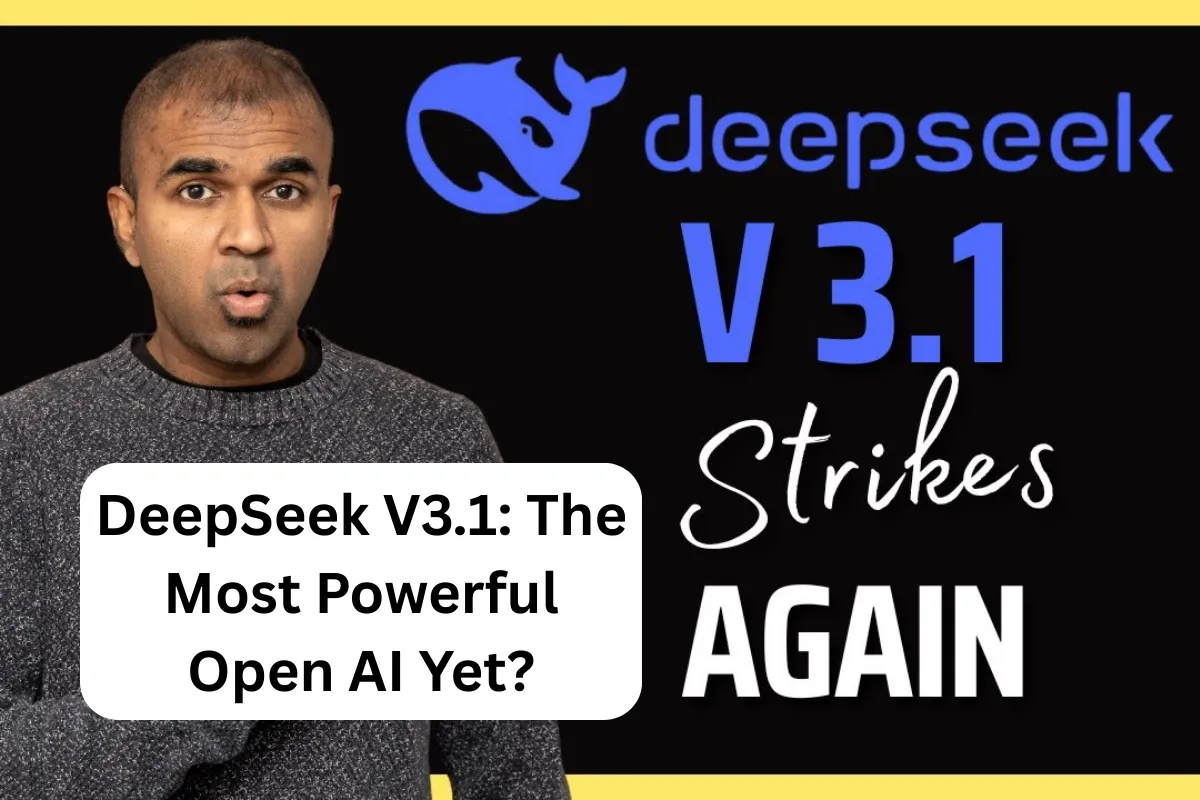Artificial Intelligence is moving at lightning speed, and DeepSeek V3.1 has quickly become one of the most talked-about models in 2025. Marketed as one of the most powerful open AI systems available, it is being praised for its speed, transparency, and accessibility. But what exactly makes DeepSeek V3.1 stand out—and could it truly be the game-changer that reshapes the open AI landscape?
What is DeepSeek V3.1?
DeepSeek V3.1 is the latest release from DeepSeek, an AI research group focused on open-source innovation. Unlike many closed models, DeepSeek offers a system that allows developers, researchers, and businesses to access, modify, and scale AI capabilities without the heavy restrictions seen in proprietary platforms.
It combines state-of-the-art natural language understanding, reasoning ability, and multimodal features (handling text, images, and structured data) into one package—making it one of the most versatile AI models to date.
Key Features of DeepSeek V3.1
- Open-Weights Architecture – Users can view, fine-tune, and adapt the model for their needs.
- High Accuracy – Outperforms several closed models in benchmark reasoning and problem-solving.
- Multimodal Capabilities – Works with text, vision, and structured data seamlessly.
- Scalable Deployment – Runs efficiently on both high-performance cloud servers and optimized local environments.
- Transparency – Researchers can study the model’s inner workings, reducing the “black box” issue of AI.
Why DeepSeek V3.1 Matters
The AI landscape has been dominated by closed systems like GPT-4, GPT-5, and Anthropic’s Claude, which provide incredible performance but limited control. DeepSeek V3.1 aims to bridge the gap by offering performance close to closed models while remaining open-source.
This move could accelerate AI democratization, allowing smaller companies, startups, and independent developers to experiment with powerful AI tools without facing licensing roadblocks or financial barriers.
Comparison: DeepSeek V3.1 vs Closed AI Models
Here’s a quick comparison of DeepSeek V3.1 against popular closed AI systems:
| Feature | DeepSeek V3.1 | GPT-5 (OpenAI) | Claude 3 (Anthropic) |
|---|---|---|---|
| Availability | Open-source (free/low-cost access) | Closed-source (subscription) | Closed-source (API-based) |
| Transparency | Full open-weights & editable | Limited | Limited |
| Multimodal Support | Yes (text + vision + data) | Yes (advanced multimodal) | Yes (mostly text-based) |
| Customization | High (fine-tuning allowed) | Restricted | Restricted |
| Accuracy on Benchmarks | Competitive with GPT-5 | Very High | High |
| Scalability | Cloud + Local Deployment | Cloud-only | Cloud-only |
The Future of Open AI with DeepSeek V3.1
DeepSeek V3.1 may signal a new era of open-source dominance in AI. By giving the community the ability to improve, edit, and distribute, it could inspire rapid innovation outside of big tech monopolies.
While closed models still lead in raw power and advanced features, DeepSeek’s approach makes cutting-edge AI more accessible, transparent, and democratic. If widely adopted, it could push the industry toward a more collaborative and open future.
FAQs About DeepSeek V3.1
Q1. What makes DeepSeek V3.1 different from GPT-5?
DeepSeek V3.1 is open-source, while GPT-5 is closed. This means anyone can use, study, and improve DeepSeek without restrictions.
Q2. Is DeepSeek V3.1 free to use?
Yes, it’s available as an open-weights model. Some enterprise-level features may involve costs, but core usage is free.
Q3. Can DeepSeek V3.1 handle images and videos?
Currently, it supports text, structured data, and image understanding. Video support may come in future versions.
Q4. How accurate is DeepSeek V3.1 compared to closed AI models?
It is competitive with leading models like GPT-5, though closed models still hold slight advantages in highly complex reasoning.
Q5. Who can benefit from using DeepSeek V3.1?
Startups, educators, researchers, and businesses that need customizable AI solutions without high licensing fees can benefit most.
